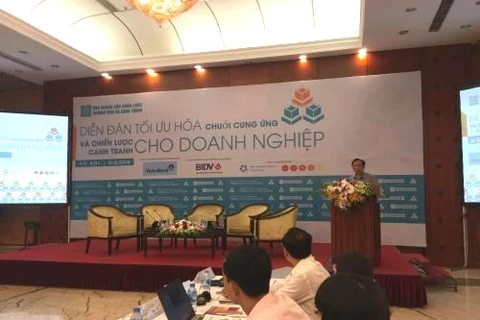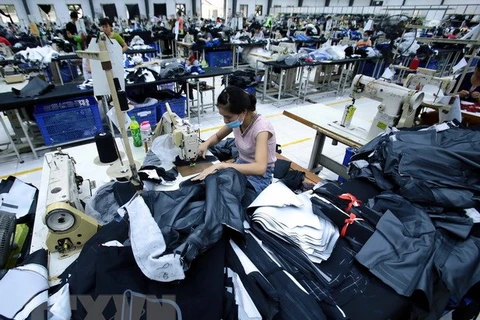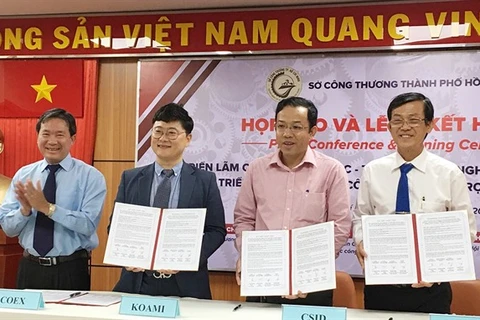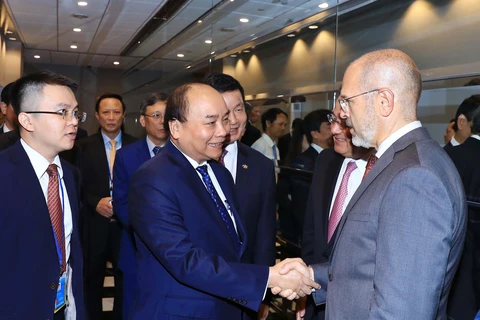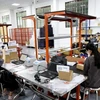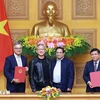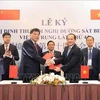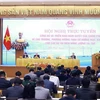 Ninety local suppliers and 68 FDI manufacturers took part in a business matching event at the AmCham Supplier Day 2018 held on October 4 in HCM City (Photo: VNA)
Ninety local suppliers and 68 FDI manufacturers took part in a business matching event at the AmCham Supplier Day 2018 held on October 4 in HCM City (Photo: VNA) HCM City (VNA) – The AmCham Supplier Day 2018 was held in Ho Chi Minh City on October 4, attracting the participation of hundreds foreign invested businesses and Vietnamese suppliers.
This was the fifth consecutive time the American Chamber of Commerce in Vietnam (AmCham Vietnam) had hosted the event, which saw a scale expansion and changes in the way of approaching among suppliers and producers to help develop global supply chains.
At the event, Brian Mtonya senior economist at the World Bank said a lack of competitive local suppliers causes foreign firms to look elsewhere for companies that can provide consistent and timely inputs needed to finalise production.
He pointed out the reasons for market failures that have deterred the development of FDI and SME (small- and medium-sized enterprises) linkages.
In Vietnam, local suppliers lack competitiveness in terms of quantity, price and quality, while more foreign-owned firms hold internationally-recognised quality certifications.
In addition, more Vietnamese firms complain about access to finance than firms from peer countries, according to Mtonya.
The lack of a skilled workforce across sectors in Vietnam is also a problem.
Michael Trueblood, director of the economic growth and governance office for USAID/Vietnam, said SMEs face challenges integrating into global value chains.
Quantity, quality, and standard process requirements are common challenges that need to be addressed.
SMEs often start as household businesses, and later meet challenges in the regulatory environment, all of which hinder linkages to foreign firms or export markets, Trueblood said.
The USAID mission goals related to economic growth will help Vietnam’s continued transformation by strengthening the SME – Foreign Firm business linkage framework, he said.
The new project, called Linkages for Small and Medium Enterprises (LinkSME), will enhance Vientamese SME’s capability to participate in global value chains in five sectors.
The 22 million USD five-year project, which began in September, will improve and expand the supplier-buyer relationships between Vietnamese and foreign firms, according to Trueblood.
Ninety local suppliers and 68 FDI manufacturers of different industries took part in the fifth annual event organised by the American Chamber of Commerce, featuring an exhibition of 70 booths for manufacturers of various industries.
Participating manufacturers and suppliers received information from the World Bank, Vietnam Chamber of Commerce and Industry, USAID, WeConnect and Arizona State University at workshops held during the event.-VNA
VNA

